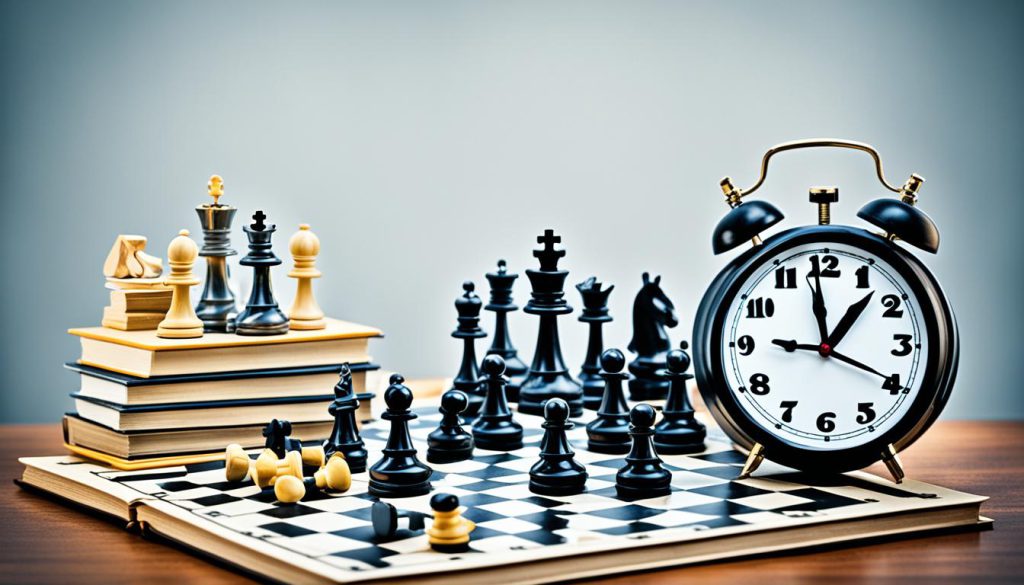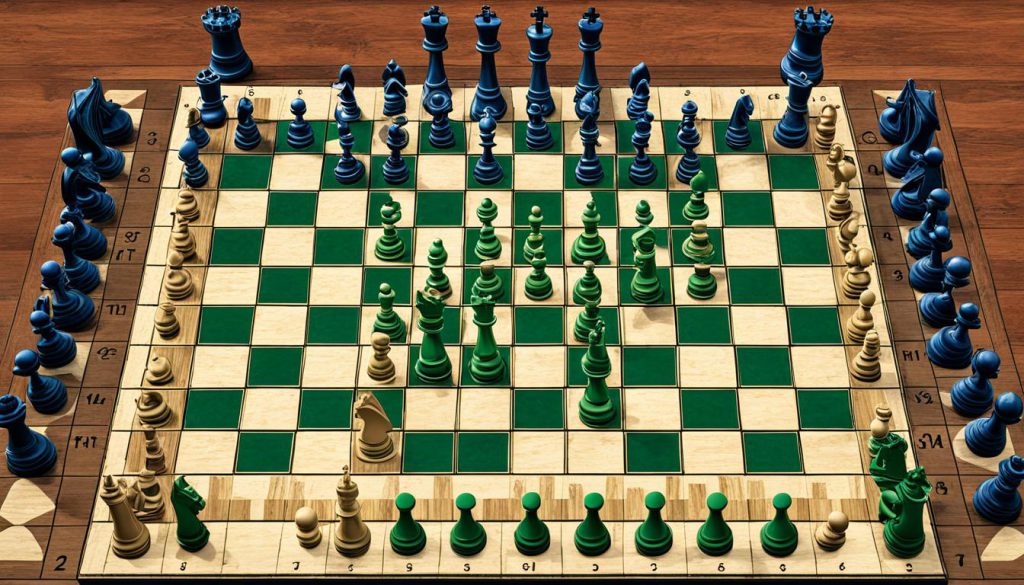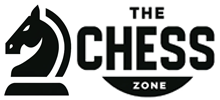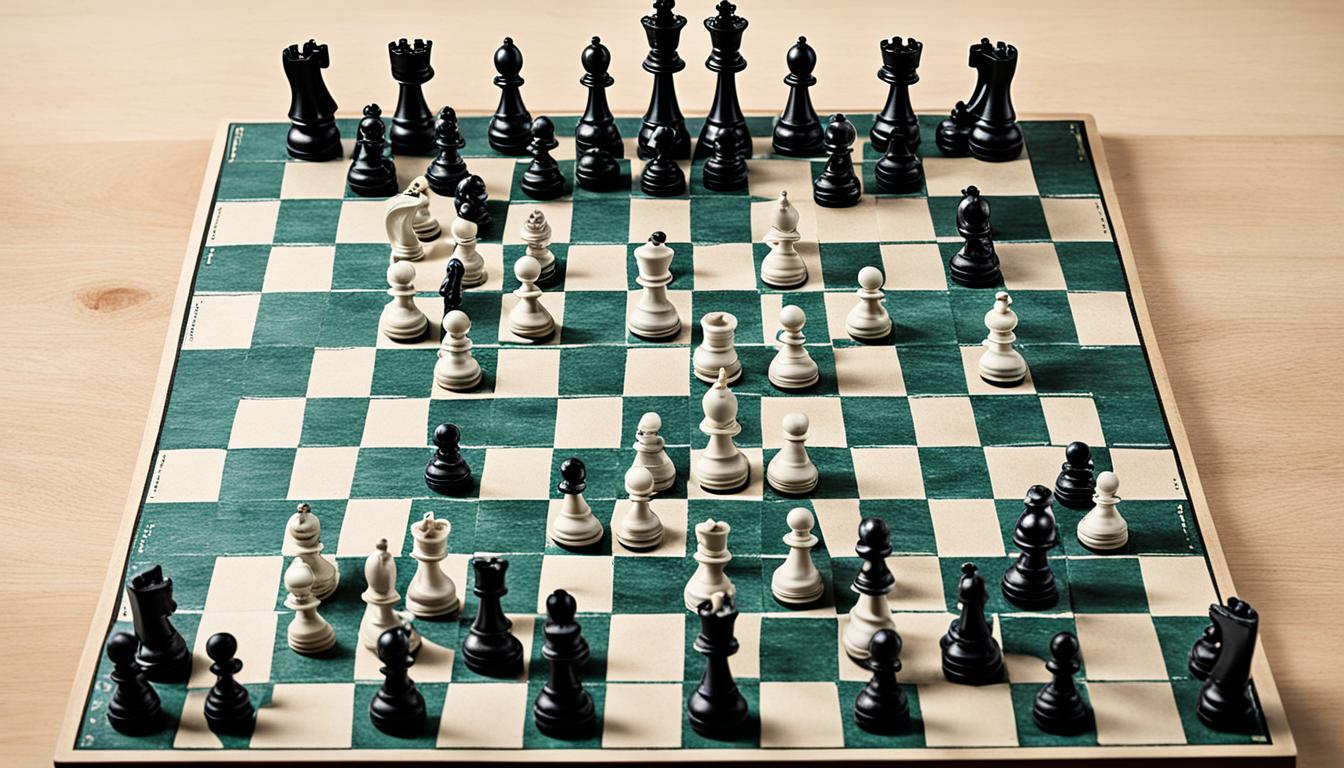Ever wondered what secrets historical chess matches might hold for your gameplay? Looking into classic chess games opens up a wealth of strategic insights and masterful lessons. These historical battles, played by famous grandmasters, offer not just pleasure but also a deep dive into the complex chess landscape.
I still remember feeling amazed by Paul Morphy’s Opera Game, active from 1893-1899. This match highlighted the importance of studying such masterpieces. Even fleeting game memories can be overcome with detailed analysis and note-taking.
By learning strategies like checking diagonals, using fianchettoed bishops, and making smart pawn moves, you can drastically improve your game. It’s crucial to spend time, whether 15-30 minutes on the main game line or 1.5-2 hours on all variations, absorbing the strategic and tactical wisdom from these classic chess encounters.
Key Takeaways
- Analyzing chess classic games can greatly enhance your chess strategy and improvement.
- Renowned chess grandmasters like Paul Morphy and Rudolf Charousek offer timeless lessons in their matches.
- Keeping a chess notebook helps compile lessons learned from historical chess matches.
- Avoiding bullet and blitz games for a period can lead to deeper strategic understanding.
- Dedicate around 1.5-2 hours to analyze all variations of a classic chess game for optimum learning.
Introduction to Classic Chess Games
Classic chess games are the core of strategic thinking in strategy board games world. They are like fine art, showing moments of history and brilliance in chess history. Looking into these games fulfills our love for the game’s beauty. It helps us climb higher in chess skills. But to really grow, we must learn actively from these historical matches.
The video course offers insight through 33 classic chess games. These games took place from the 18th century to the start of World War II. They are chosen from the “Chess Classics” in ChessBase Magazine editions 160-209, with over 8 hours of detailed commentary in English.
What makes this course special is its use of thematic keywords for training. Players learn various chess strategies and tactics this way. There are also video courses on topics ranging from the Sveshnikov Sicilian to material imbalances. Players of all levels can find something at a price they can afford.
| Price Point | Video Content | Focus Area |
|---|---|---|
| €29.90 | Introductory Lessons | Basic Strategy |
| €39.90 | Intermediate Analysis | Advanced Tactics |
| €54.90 | Master Class | Deep Strategy |
| €483.40 | Full Series | Comprehensive Understanding |
There are Master Class video courses on chess giants like Garry Kasparov and Judit Polgar. These focus on analyzing their games and strategies. They help viewers improve their chess understanding and skills.
Reflecting on my journey, I see the huge impact these historical games have. I began to value strategy board games more after turning professional in 2015. At first, laziness and peer pressure held me back. But the strategic depth and rich chess history in these games are now key to my growth.
Famous Chess Games and Their Impact
Famous chess games have a big impact on modern chess, from popular openings to the charm of old chess pieces. Each game is a mix of strategy and artistry. Let’s look at three famous games and their impacts.
Paul Morphy’s Opera Game
Paul Morphy’s “Opera Game” from 1858 is known for its smart moves and beautiful play. It teaches important lessons like quick development, controlling the center, and protecting the king. The use of old chess sets in this game adds a touch of history and beauty, making it a great lesson for all.
Kasparov vs. Karpov: The 24th Game of Seville
The 24th Game in Seville between Kasparov and Karpov in 1987 was a battle of minds. Kasparov’s performance was impressive, showing his skill and control. This game highlighted how putting pressure with just one piece can cause big mistakes. It led to new chess openings and ideas still used today.
Fischer’s Memorable Matches
Bobby Fischer is remembered for his great matches, which added a lot to chess. His game against Spassky in 1972 showcased his understanding of positions and tactics. Fischer’s influence is seen today as players study his strategies using both classic chess sets and modern ones.
| Game | Player 1 | Score | Player 2 | Score |
|---|---|---|---|---|
| Steinitz vs. Chigorin, 1892 | Steinitz | 95.2 | Chigorin | 79.8 |
| Capablanca vs. Lasker, 1921 | Capablanca | 91.5 | Lasker | 86.1 |
| Tal vs. Botvinnik, 1960 | Tal | 86.3 | Botvinnik | 83.2 |
| Petrosian vs. Spassky, 1966 | Petrosian | 91.2 | Spassky | 81.7 |
| Fischer vs. Spassky, 1972 | Fischer | 92.4 | Spassky | 79.2 |
| Kasparov vs. Karpov, 1985 | Kasparov | 97.4 | Karpov | 83.9 |
| Kasparov vs. Karpov, 1987 | Kasparov | 89.7 | Karpov | 84.1 |
These games are not just important history. They inspire new chess players. They show the beauty of old chess pieces and the development of chess openings. These masterworks are key to the story of chess.
Why Study Classic Chess Games?
Studying classic chess games is key for chess improvement. These games bring a major change through their strategic depth. Just 30 years ago, mastering chess meant deeply studying these classics.
These timeless games are the foundation of modern chess understanding. Masters like Morphy and Alekhine have taught us much. Yet, replaying games from heroes like Tal and Fischer adds drama that deepens our learning.
Linking the study of classics to real chess improvement is tough but very rewarding. Top players show us the benefits of knowing these games well. They stand out because of their deep strategy and sharp tactics.
| Aspect | Percentage Emphasis |
|---|---|
| Knowledge of Classical Games | 100% |
| Prominence Compared to Openings and Puzzles | 1:0 |
| Ratio of Usage for Strategic Breakthroughs | Advantageous |
Looking closely at these classics helps us grow and master chess. Finding game patterns that help us win feels great. For example, learning moves from the Smyslov-Kottnauer game can lead to new strategies. Mixing these old insights with new analysis helps us improve in a complete way.
Lessons from Chess Masters
Chess masters offer valuable lessons through classic games. They cover three areas: positional understanding, strategic depth, and tactical brilliance. Learning these aspects is key for mastering chess and enhancing strategy.
Positional Understanding
Positional understanding involves mastering pawn structures and piece coordination. By studying grandmasters, we learn the importance of applying basic principles across various openings. Despite a low retention rate of such lessons, noting them in a chess notebook can boost improvement greatly.
Strategic Depth
Strategic depth is about planning for the future and using opponents’ weaknesses. Rudolf Charousek showed incredible strategy before passing away at 26. His use of bishop fianchettoing showcases deep strategic thinking in chess. Although some think old games don’t apply today, their strategic value lasts forever.
Tactical Brilliance
Tactical brilliance is the art of changing the game with combinational play. Many students watch games but forget crucial tactics. Looking at classic games can teach us powerful moves and concepts. Practicing these tactics can greatly improve one’s ability to spot opportunities.
| Aspect | Notes |
|---|---|
| Positional Understanding | High occurrence rate of using concepts from one game in multiple openings. Writing mini-lessons enhances retention. |
| Strategic Depth | Exploiting weaknesses over time. Strategies from Rudolf Charousek highlight long-term planning. |
| Tactical Brilliance | Several examples from classic games. High percentage of students struggle with retaining key tactics. |
How to Analyze Chess Classic Games
Analyzing classic chess games involves a detailed method beyond just watching. I follow a strict, in-depth routine:
- Right after a game ends, I write down my initial thoughts. Botvinnik highlighted the value of analyzing one’s own games. This step captures my first impressions.
- Later, I go through the game again, marking my moves and important moments with different colors. This helps me remember game principles and key points.
- I spend 15-30 minutes playing through the game’s main lines at first. This helps me understand the basic strategies the masters used.
- For a deeper dive, I spend 1.5-2 hours looking at all variations mentioned. This second, detailed study reveals strategic and tactical layers.
- Every 5-6 months, I review the games again to deepen my understanding. This ensures the lessons stick with me over time.
- Playing slow online games of at least 25 minutes and analyzing them without an engine improves my analysis. It also strengthens basic concepts.
- Keeping a PGN or Notebook of my game analyses helps me see my progress. I can look back at previous analyses anytime.
Using top chess apps enhances the analysis too. These apps offer powerful tools to break down each move and try different strategies. With these modern aids, the complexities of classic games become clearer. This greatly improves my chess analysis skills.
Refreshing my knowledge on specific endgames like rook endings and Queen vs. Rook (Q vs R) helps too. This complete method of studying classic chess games boosts my play. It also makes me more appreciative of the game’s masters and their creative genius.
Effective Study Techniques for Chess
Improving at chess requires using different chess study techniques. These strategies helped boost my rating. They also put me on the path to becoming a chess master.

Using Annotated Game Collections
One key method I’ve used is exploring annotated game collections. Studying games annotated by grandmasters let me understand their strategies and tactics. This focus, especially with the 1.d4 opening when playing white, has helped me win more.
Physical vs. Digital Boards
The choice between physical and digital chess boards matters for learning and memory. Physical boards give a tangible connection to the game. Digital boards, found in online chess tournaments, offer interactive learning and vast resources. I find mixing both keeps learning fresh and adaptable.
Regular Review and Practice
Regular practice cements new chess knowledge. Playing many online training games, especially on openings, has expanded my chess strategies. Also, practicing endgames has elevated my skills. Revisiting what I’ve learned regularly boosted my performance in online chess tournaments, reaching scores of 2230 and 2300.
Making the Most of Chess Analysis Software
In the captivating world of strategic board games, using chess analysis software is key to getting better. There are over 150 million online chess players worldwide. This opportunity for improvement is huge. The software helps us deeply analyze our games. It lets us try different moves and see what might have happened.
The app is packed with features. You get over 500,000 chess puzzles, lots of lessons, and videos to watch. With more than 120 million members and 20 million games played every day, it’s a lively community. This tool mixes traditional chess tactics with the latest technology.
There are membership prices for every budget: $30, $50, and $80 a year. Depending on your membership, you get puzzles, weekly lessons, and daily game reports. Chess.com also offers a 7-day free trial. They believe this training boosts your game significantly.
The app collects data like your browsing history and personal info. But its benefits in sharpening your chess skills are clear.
| Feature | Details |
|---|---|
| Number of Players Worldwide | 150 million |
| Unique Chess Puzzles | 500,000+ |
| Lessons and Videos by Masters | Hundreds |
| Daily Chess Games | 20 million |
| Membership Levels | $30, $50, $80 yearly |
| Basic Member Access | 3 puzzles, 1 lesson per week, 1 game report per day |
| Privacy Practices | Browsing history, usage data, contact info, identifiers, diagnostics |
Using chess analysis software makes us better players. It helps us practice against challenging opponents. This tool is crucial for anyone serious about mastering strategic board games.
Learning from Classic Chess Sets and Vintage Pieces
Classic chess sets and vintage pieces are more than just items to collect. They hold a deep historical meaning, enriching our grasp of chess. These pieces show the styles and thoughts of their times, giving us insight into chess’s past.
Historical Context
Looking into classic chess sets uncovers the game’s history. The materials and craftsmanship of these pieces share stories of artistry from the past. For example, woods like Beech and Sycamore highlight the creators’ focus on detail and lasting quality.
Stylistic Influence
The design of vintage pieces hints at the values and trends of their eras. Take a Knight from a Classic set, rated 4/5 for its “Horse factor,” showing a strong liking for knights. Meanwhile, the Marble set’s Knight, rated at 3.5/5, shows a tilt towards solid, strategic play.
Examining different chess sets shows us their unique impacts:
| Chess Set | Horse Factor Rating | Remarks |
|---|---|---|
| Classic set | 4/5 | High appreciation for knights. |
| 3D ChessKid set | 5/5 | Novelty sets, small offbeat collection. |
| 3D Staunton set | 1/5 | Traditional, conservative style. |
These comparisons help us understand the varied importance, aesthetics, and strategies these chess pieces symbolize. They add to our appreciation of chess’s enduring allure.
Classic Chess Games in Online Tournaments
The digital era has transformed classic chess into exciting online tournaments. Now, over 2,000,000,000 games have been played on Chess.com. This has made online platforms the new place to play. Here, players can explore historic matches like “Kasparov vs. Topalov, Wijk aan Zee 1999.” This game is famous for being one of the greatest, as named by Chess.com’s staff.
Another gem is the “Morphy vs. Allies, Paris Opera 1858,” known as the “Opera Game.” Viswanathan Anand’s games are also a hit. He was the world champion from 2007 to 2013. His games are admired for their deep strategy and smart moves.
Games like “Karpov vs. Kasparov, World Championship 1985, game 16” highlight Kasparov’s skill. He reached a peak Elo rating of 2851 in 1999. These classic matches teach us a lot about chess strategy.
Online platforms let players study games like “Byrne vs. Fischer, New York 1956.” Here, a young Bobby Fischer showed his genius. “Ivanchuk vs. Yusupov, Brussels 1991” is another must-see. It was a rapid tiebreak during the world championship Candidates’ cycle. These sites mix old and new, celebrating past masters while playing today’s game.
Players get motivated by games like “Max Euwe vs. Geller, Zurich 1953” and “Kasparov vs. Topalov, Wijk aan Zee 1999.” Each match offers insight into chess history. They also help players improve their game on these platforms.
- Engage with historic strategies from chess classic games.
- Analyze the moves of legends such as Garry Kasparov and Viswanathan Anand.
- Compete in online chess tournaments to hone skills against contemporary and historical strategies.
- Utilize online chess platforms to relive and learn from iconic games like “Morphy vs. Allies, Paris Opera 1858” and “Byrne vs. Fischer, New York 1956.”
Bringing classic chess games into online tournaments lets players dive into chess’s rich history. They can connect with the past while using today’s technology. It’s a fun and educational experience for all chess fans.
Popular Chess Openings in Classic Games
When we explore chess classic games, some chess openings really stand out. The King’s Gambit, Queen’s Gambit, and Sicilian Defense are crucial. They’re loved for their deep strategy and historical importance.

King’s Gambit
The King’s Gambit is an old and bold move, famous in the Romantic Chess Era. White gives up a pawn early (1. e4 e5 2. f4) to quickly get pieces into action and attack.
This strategy shines in many chess classic games. It shows how risking a piece can lead to exciting, imaginative play. The King’s Gambit keeps drawing in players who want to make bold moves.
Queen’s Gambit
The Queen’s Gambit, made famous by a Netflix series, starts with 1. d4, d5, and 2. c4. It gives White good central control. It’s a mix of solid setup and attack options.
It includes the Queen’s Gambit Accepted and Declined, deeply studied and played often. These challenge players to plan ahead and mix strategy and tactics.
Sicilian Defense
The Sicilian Defense is celebrated and deeply studied. It’s a response to 1. e4 leading to unique, complex positions. Black starts fighting back from the beginning. There are sharp variations like the Dragon and Najdorf.
At top levels, it’s a preferred defense for its strength and chance for victory. It’s key in many intense chess classic games. It shows the importance of smart moves and good calculation.
Looking into these famous chess openings opens a door to the brilliance of chess history. Mastering the King’s Gambit, Queen’s Gambit, and Sicilian Defense can improve your game. It connects us to past masters and enriches modern play.
The Role of Top Chess Apps in Studying Classic Games
Top chess apps have changed how we study classic chess games in the digital age. They allow interactive learning and direct access to grandmaster games. This helps us get into the strategies and histories of chess greats. I find them crucial for improving at chess.
Interactive Learning
Top chess apps excel at interactive learning. Sites like Chess.com and Dr. Wolf offer guided lessons and instant move feedback. Dr. Wolf shines as a virtual coach, simplifying complex ideas. ChessKid and Chess Adventure make it fun for kids, mixing learning with entertainment.
This method not only makes learning fun but also helps remember the lessons.
Access to Grandmaster Games
Accessing grandmaster games is easy with these apps. Chess.com, for example, has a large database for game analysis. This is crucial for in-depth study of strategy and tactics. Former World Chess Champion Vladimir Kramnik used such analyses to prep. Now, this process is easier with these apps.
| App | Special Features | Platform |
|---|---|---|
| Chess.com | Extensive database of grandmaster games, tutorials | Android, iOS |
| ChessKid | Interactive lessons for students, game customization | Android, iOS |
| Chess Adventure for Kids | Character customization, mythical themes for children | Android, iOS |
| Chess Clock | Portable chess clock, delay and increment modes | Android, iOS |
| Dr. Wolf | Step-by-step strategy lessons, virtual coach | Android, iOS |
These top chess apps provide great resources and guidance for improving at chess. They are ideal whether you’re new or experienced at the game. They help bridge the gap to master classic chess games and tactics.
Best Practices for Incorporating Lessons into Your Own Game
To get better at chess, you should use proven methods. The 1-1-1 plan is perfect for this. It suggests doing 1 puzzle per day, playing 1 serious game per week, and learning 1 new concept per month. This method helps you build a consistent chess routine for steady improvement.
Puzzles boost your tactical skills, helping you spot and take advantage of key moments in games. A regular puzzle routine improves your ability to calculate moves and recognize patterns, which is crucial for winning.
Playing serious games requires full concentration. Eliminate distractions and put in your best effort. Use slower time controls for deeper thinking. It’s also key to review your games afterwards to learn from your mistakes.
Learning new concepts is just the start; you have to practice them to improve your gameplay. The strategy of learning one new concept a month gives you enough time to master these skills. This leads to gradual and consistent progression.
Adapting and personalizing these strategies will make your chess study more effective. It will sharpen both your strategic and tactical skills, turning you into a stronger player.
| Practice | Frequency | Purpose |
|---|---|---|
| 1 Puzzle | Per Day | Develop Tactical Skills |
| 1 Serious Game | Per Week | Practical Application of Skills |
| 1 New Concept | Per Month | Incremental Improvement |
Conclusion
Exploring chess classics is like taking a journey back in time, filled with wisdom from past masters. These games are not just old relics; they are the bedrock of today’s chess knowledge. We learn from legends like Morphy, Alekhine, and Rubinstein, while the victories of Botvinnik, Tal, and Fischer show us their brilliance.
Three decades ago, everyone agreed that studying classic games was the best way to improve at chess. Even though we have online tools and tactics training now, classic chess games still form the core of mastering the game. Games from the past offer lessons in strategy and tactics that guide players today. For example, looking at the game Smyslov-Kottnauer can inspire new moves and link us to modern chess strategies.
It might be hard to see how classic chess games directly make us better, but learning from them is truly rewarding. Diving into these masterpieces helps us understand their beauty and complexity. It honors the creativity of past champions and boosts our own chess skills. In the end, studying these historical games is key to becoming a true chess master.
Source Links
- https://www.chess.com/article/view/how-to-study-master-chess-games
- https://lichess.org/forum/general-chess-discussion/how-to-study-past-chess-classic-games
- https://shop.chessbase.com/en/products/rogozenco_chess_classics
- https://nextlevelchess.blog/games-of-chess-world-champions/
- https://www.chess.com/article/view/greatest-world-chess-championship-games
- https://www.chess.com/article/view/the-best-chess-games-of-all-time
- https://www.chess.com/blog/ddtru/why-study-classics
- https://chessmood.com/blog/why-It-is-a-must-to-study-classical-chess-games
- https://www.robledothoughts.com/thoughts/lessons-learned-from-playing-chess-part-1
- https://www.chess.com/article/view/how-to-analyze-chess-games
- https://www.chess.com/forum/view/general/the-road-to-master-level–how-to-study-chess
- https://apps.apple.com/us/app/chess-play-learn/id329218549
- https://www.chess.com/article/view/what-your-chess-piece-style-says-about-you
- https://www.bestchesssetever.com/
- https://www.houseofstaunton.com/the-classic-chess-set.html
- https://www.thesprucecrafts.com/most-common-chess-openings-611517
- https://gamerant.com/chess-best-opening-moves/
- https://www.365chess.com/view/chess-openings-for-white-full-guide/
- https://www.chess.com/article/view/the-best-chess-apps
- https://en.chessbase.com/post/new-how-to-study-the-classics-by-adrian-mikhalchishin
- https://www.chess.com/article/view/chess-1-1-1-study-plan
- https://www.chess.com/terms/classical-chess
- https://chessaddict63.blogspot.com/2011/01/why-study-chess-classics.html

